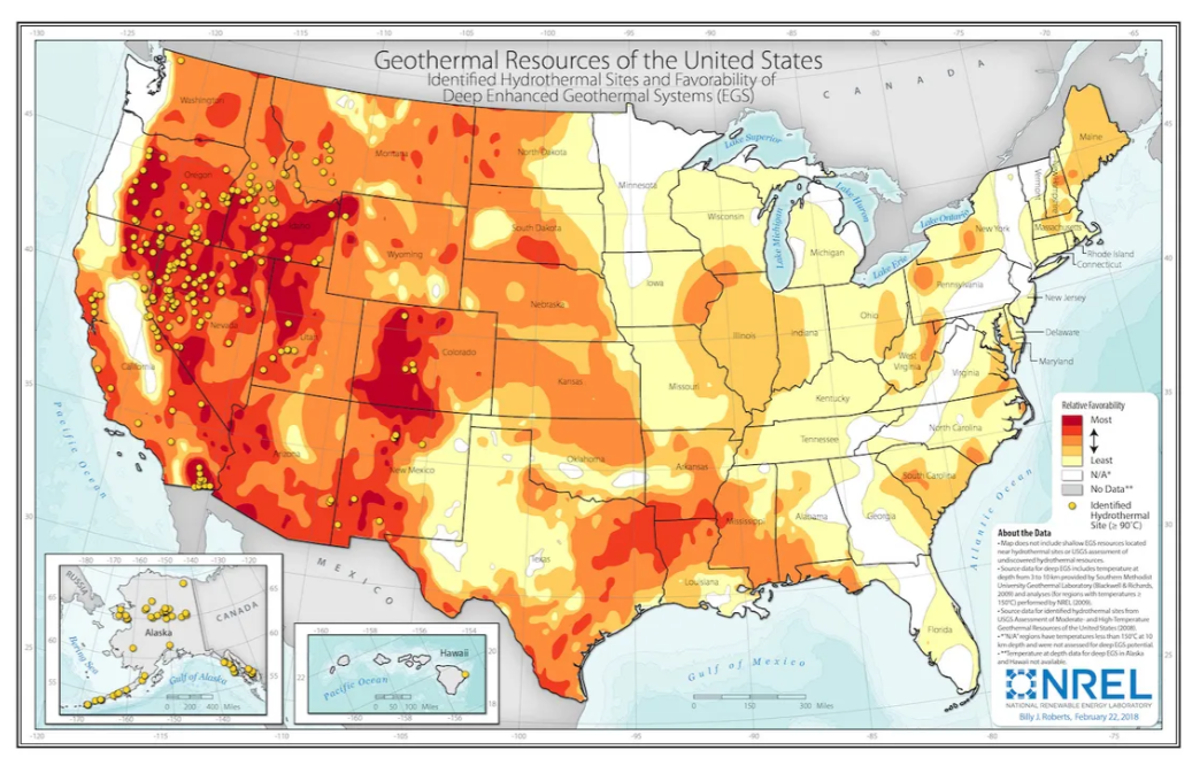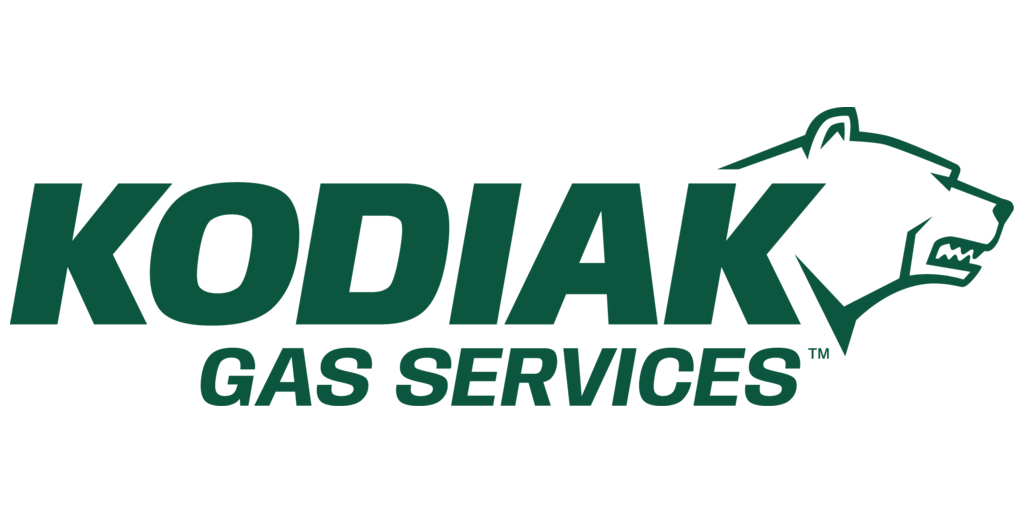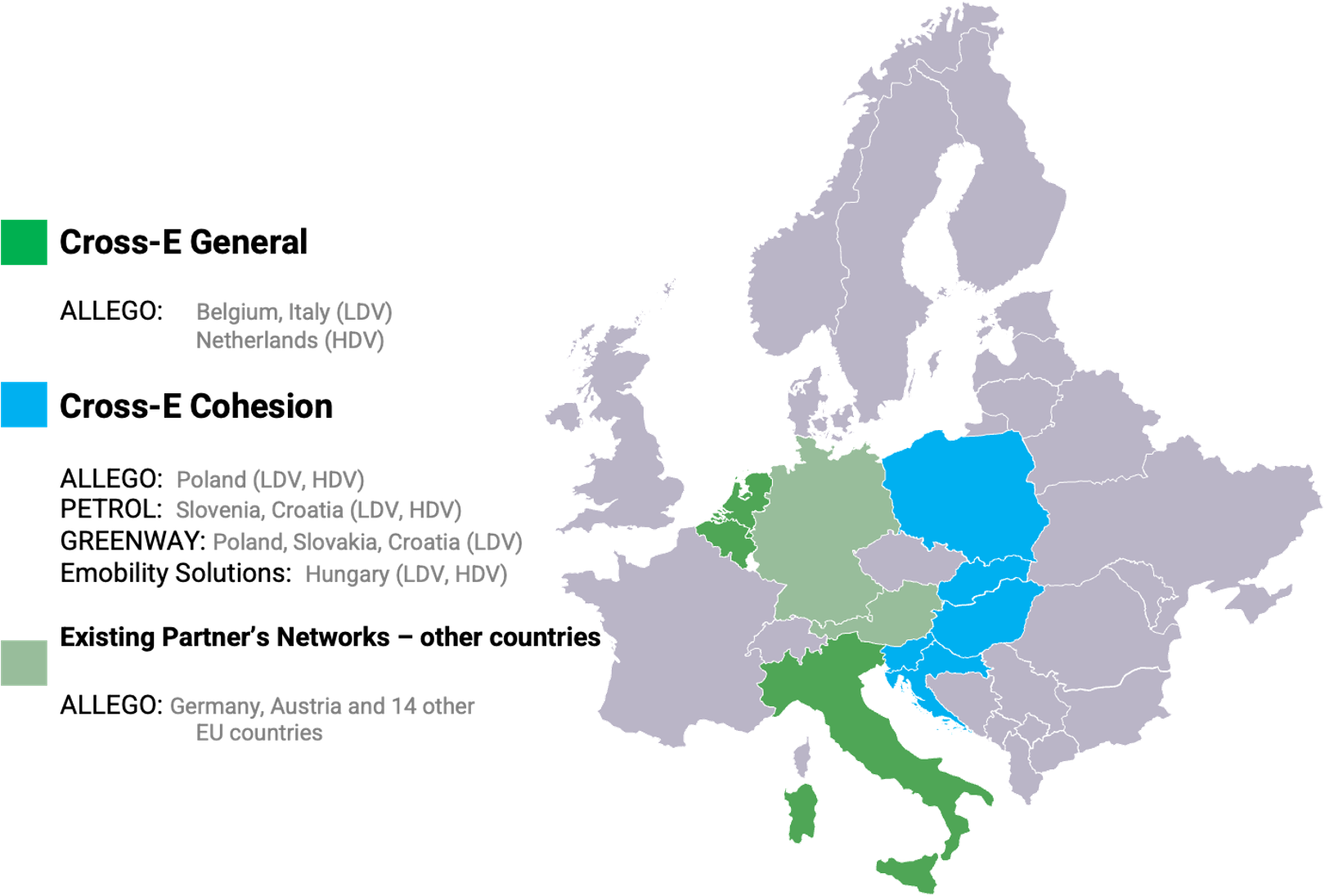
Fervo Energy, based in Houston, Texas, is using horizontal drilling techniques developed by the oil and gas industry to unlock geothermal resources in places where tapping underground sources of heat to generate electricity has never been possible before. At a test site known as Project Red located in northern Nevada, the company says it has successfully completed the well test at its full-scale commercial pilot facility.
The successful well test confirms the commercial viability of Fervo’s drilling technology and establishes Project Red as the most productive enhanced geothermal system in history. The 30-day well test, a standard for geothermal, achieved a flow rate of 63 liters per second at high temperature that enables 3.5 MW of electric production, setting new records for both flow and power output from an enhanced geothermal system.
Fervo is the first company to successfully drill a horizontal well pair for commercial geothermal production. After drilling down 7,700 feet, the drills then proceeded laterally a distance of 3,250 feet. Liquids injected into the well reached a temperature of 191°C (376ºF) . Data collected from the pilot program will enable rapid advancement in geothermal deployment. The next Fervo facility is expected to achieve more than double the power output of the pilot design.
“By applying drilling technology from the oil and gas industry, we have proven that we can produce 24/7 carbon-free energy resources in new geographies across the world. The incredible results we share today are the product of many years of dedicated work and commitment from Fervo employees and industry partners, especially Google,” says Fervo Energy CEO Tim Latimer.
In 2021, Fervo and Google signed the world’s first corporate agreement to develop next generation geothermal power. The goal of the partnership is to power Google’s Cloud region in Las Vegas with an “always-on,” carbon-free resource that will reduce the company’s hourly reliance on fossil fuels.
“Achieving our goal of operating on 24/7 carbon-free energy will require new sources of firm, clean power to complement variable renewables like wind and solar,” says Michael Terrell, director for energy and climate at Google. “We partnered with Fervo in 2021 because we see significant potential for their geothermal technology to unlock a critical source of 24/7 carbon-free energy at scale, and we are thrilled to see Fervo reach this important technical milestone.”
Fervo claims the results from its Project Red pilot facility support the findings of the DOE Enhanced Geothermal Earthshot and show that geothermal energy could supply over 20% of U.S. power needs. In conjunction with wind and solar, geothermal energy could be a key component of a fully decarbonized grid. Fervo says that the results of the Project Red testing show that no technological barriers to geothermal deployment remain.
Professor Jesse Jenkins, leader of the ZERO lab at Princeton, says, “Power systems modeling confirms that geothermal can be a critical player in a fully decarbonized grid. Fervo’s successful commercial pilot takes next-generation geothermal technology from the realm of models into the real world and starts us on a path to unlock geothermal’s full potential.”
This summer, Fervo broke ground on its first greenfield development in southwest Utah, adjacent to the DOE’s Frontier Observatory for Research in Geothermal Energy (FORGE). Revenue and the lessons learned from that project will help move the development of other projects forward in new geographical areas.
According to Canary Media, one of the keys to the success of the Fervo system is the use of fiber optic sensing tools to access geothermal resources that are otherwise too expensive or technically complex to reach using existing methods. It means accessing geothermal sources of energy anywhere in the world — not just in areas where geysers and not springs are common — will be easier and less expensive. “This proves that the way we’re developing geothermal can produce much more productive [geothermal] wells than anything that’s been done before,” Latimer says.
Geothermal Energy In The US

Image courtesy Of NREL
The United States has enough geothermal heat resources to meet the entire world’s electricity needs, according to the U.S. Department of Energy. But conventional geothermal technologies mainly involve tapping relatively easy-to-reach “hydrothermal” resources found in a handful of places, including Northern California and Nevada’s Great Basin region.
At the present time tne country has only 3.7 GW of geothermal power plants — enough to supply about 0.4% of total U.S. electricity generation. Enhanced geothermal technology accesses new geothermal reservoirs instead of relying on naturally available resources.
A recent Department of Energy analysis found that enhanced geothermal projects could provide as much as 90 GW of electricity to the American utility grid by 2050 — enough to meet the needs of more than 65 million U.S. homes. To do that, companies will need to develop and significantly scale up technologies that today exist mainly as pilot and demonstration projects.
They will also need to avoid triggering earthquakes and causing potential damage in the process of drilling and fracturing rocks. Fervo says it implemented a protocol developed by the Department of Energy to mitigate seismic activity during testing at the Project Red site.
“When you think about the metrics to be successful for geothermal, it comes down to how much flow rate you have and how much reservoir volume is there, so that your fluid can stay down there long enough to get hot,” Latimer said. “Going horizontally, instead of just a simple vertical well, completely changes the game in terms of how effective you can be on a per-mile basis.” A project’s flow rate — how much fluid is moving through the well over time — is used to model the amount of electricity generation that can be deliver to the grid.
Latimer says the company’s goal is to produce 400 MW by 2028 — 100 times more power than the Red Project is capable of. “That’s a step-change in scale for us,” he said. “But because of how promising the results are for this [Nevada] pilot, we’re very confident in our ability to scale up and meet that next phase of development.”
The Utah Forge project, a $220 million, DOE-led initiative, is deploying a similar approach to Fervo’s near the Mineral Mountains in Utah. Earlier this month, the research project achieved its own technology milestone, proving that its two deep vertical wells that link to a long horizontal circuit are indeed connected beneath the surface, according to the Deseret News.

It’s HOT Down Below
12 miles or more below the surface of the Earth, temperatures are between 1,000 to 3700 degrees Celsius. If humans could tap that heat, there would be enough energy to power the world for millenia without emitting one gram of carbon dioxide. But the technology to drill that deep doesn’t exist — yet.
Paul Woskov is a research engineer at MIT’s Plasma Science and Fusion Center. For the past 14 years, he has been experimenting with a device known as a gyrotron in his research into fusion power. Woskov’s ideas have been adopted by a new MIT spinoff known as Quaise Energy. Its CEO, Carlos Araque, told Bloomberg recently a gyrotron is “a big cousin of the microwave in your kitchen.”
It operates using different frequencies than a microwave and is 1,000 times more powerful, but, “It’s a fairly mature technology. We just use it for this purpose,” Araque says. A gyrotron blasts a hole thorough just about any material you can think of, including the rock in the Earth’s crust that surrounds the mantle. Quaise hasn’t actually drilled down that far, but it is working to achieve that goal.
The point is, there are solutions to the world’s need for zero emission energy. The only question is whether they can become viable in time to prevent humans from turning the Earth into a baked potato. According to some, we have already passed the point of no return.
I don’t like paywalls. You don’t like paywalls. Who likes paywalls? Here at CleanTechnica, we implemented a limited paywall for a while, but it always felt wrong — and it was always tough to decide what we should put behind there. In theory, your most exclusive and best content goes behind a paywall. But then fewer people read it! We just don’t like paywalls, and so we’ve decided to ditch ours. Unfortunately, the media business is still a tough, cut-throat business with tiny margins. It’s a never-ending Olympic challenge to stay above water or even perhaps — gasp — grow. So …
Sign up for daily news updates from CleanTechnica on email. Or follow us on Google News!
Have a tip for CleanTechnica, want to advertise, or want to suggest a guest for our CleanTech Talk podcast? Contact us here.
Former Tesla Battery Expert Leading Lyten Into New Lithium-Sulfur Battery Era:
CleanTechnica uses affiliate links. See our policy here.



